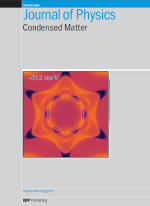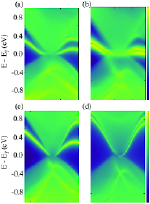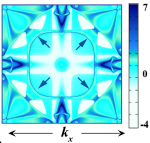 Energy fluctuations in phosphorene hit by an intense femtosecond laser
Energy fluctuations in phosphorene hit by an intense femtosecond laser
Since the discovery of graphene and its extraordinary mechanical and optical properties, there has been a sharp rise in the interest of similar two-dimensional (2D) materials. Among them, the transition metal dichalcogenides (TMDs) are promising candidates for optoelectronic and photonic devices mainly due to their visible-range band gap. Their electronic and optical properties are dominated by Coulomb-bound electron-hole pairs called excitons. Apart from conventional linear optical properties, very recently, there have been a lot of experimental reports of ultrafast exciton dynamics – to trigger and control the electron motion using ultrashort few-cycle laser pulses. In contrast, there are very few theoretical reports on the description of processes in the ultrafast femtosecond regime for 2D materials.
In three-dimensional bulk insulators, it is shown that the optical properties are modified on the time scale of femtoseconds, and these changes are surprisingly reversible. This indicates that the strong-field induced induced electronics in the femtosecond domain will be orders of magnitude faster than the current semiconductor-based electronics. Recent experiments suggests that the ultrashort few cycle laser pulses trigger currents in the bulk dielectrics. The magnitude and direction of the induced current depend on the laser pulse amplitude and carrier-envelope phase. These currents are below destruction threshold, indicating that the electronic band structure is strongly distorted by intense laser field, thereby converting an insulator (SiO2) transiently into a metal on the sub-femtosecond scale.
In 2D, the conduction band-filling effect in few layer MoS2 is observed due to ultrafast response. It needs to be checked whether this is a non-adiabatic transfer of electrons in conduction band and whether the current persists after the laser pulse is gone for 2D materials. How does this behaviour change with increasing number of layers and its comparison with the bulk? Whether the transferred charge has dependance on the orientation of polarization of light or not. A complete description of the optical field induced currents needs to be given using first principles methods in real space and real time in order to track the spatially and time-resolved electron density and electrical current density within the unit cell. This formalism can also be extended to electron dynamics in 2D quantum dot superlattices. The intensity of the ultrafast laser will be varied to see the effects on the induced currents. Also, in the extreme limit case, where electron-phonon interaction dominates, changes in the structural and electronic properties needs be observed.
Search content by categories





